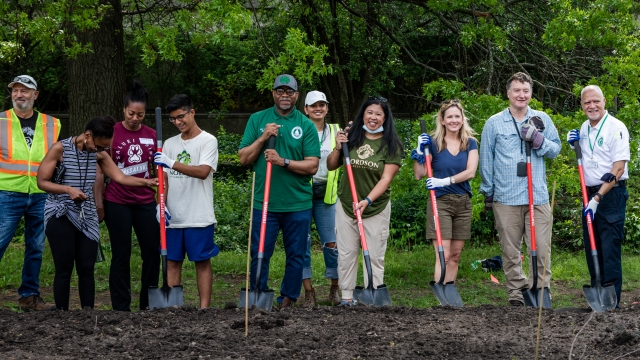Packed with a wide variety of native plants and trees, tiny forests can grow ten times faster than conventional forests — and require no water or weeding after only three years.
"Every time I visit, I'm blown away," says Christine Diploma, the CEO of Nordson Green Earth Foundation, a nonprofit that helped plant the first tiny forest in Illinois in May 2022.
Traditional forests absorb carbon dioxide, reduce air pollution and support wildlife. Tiny ones in urban areas offer even greater potential.
"If we have urban heat islands and they need more trees and we can grow them to maturity in 20 years, then why not?" added Dr. Sheetal Khedkar Rao, the nonprofit's chief health officer.
Hundreds of tiny forests have been popping up around the world ever since Japanese botanist Akira Miyawaki developed the tree-planting method in the 1970s.
Now they are slowly appearing in the U.S.
Long-time friends Diploma and Khedkar Rao mapped out plans for the mini forest in Markham, Illinois, early in the pandemic.
SEE MORE: Could you reduce meat consumption by 50% to help the environment?
"One of the things that we saw with COVID is that outside was supposed to be the safe place to be, but there were so many people that didn't have a safe outside to be," said Khedkar Rao.
They chose a plot just south of Chicago partly because it's in an area that lacks greenery. On planting day, in May 2022, dozens of community members and students from a nearby middle school joined in.
"We both have kids. We know that climate change is going to be worse for them than it was for us," said Khedkar Rao.
Involving hundreds of local children in the project is a way to "get the kids learning about the environment so that they can then become stewards of the environment," she added.
One tiny forest, on its own, may seem like a drop in the bucket in the fight against climate change.
But when residents of all ages come together to transform their own local neighborhood, it creates a ripple effect.
"You can change your community by taking a small action like this. And sometimes it's those small actions that really snowball into bigger things," said Khedkar Rao.
Trending stories at Scrippsnews.com



